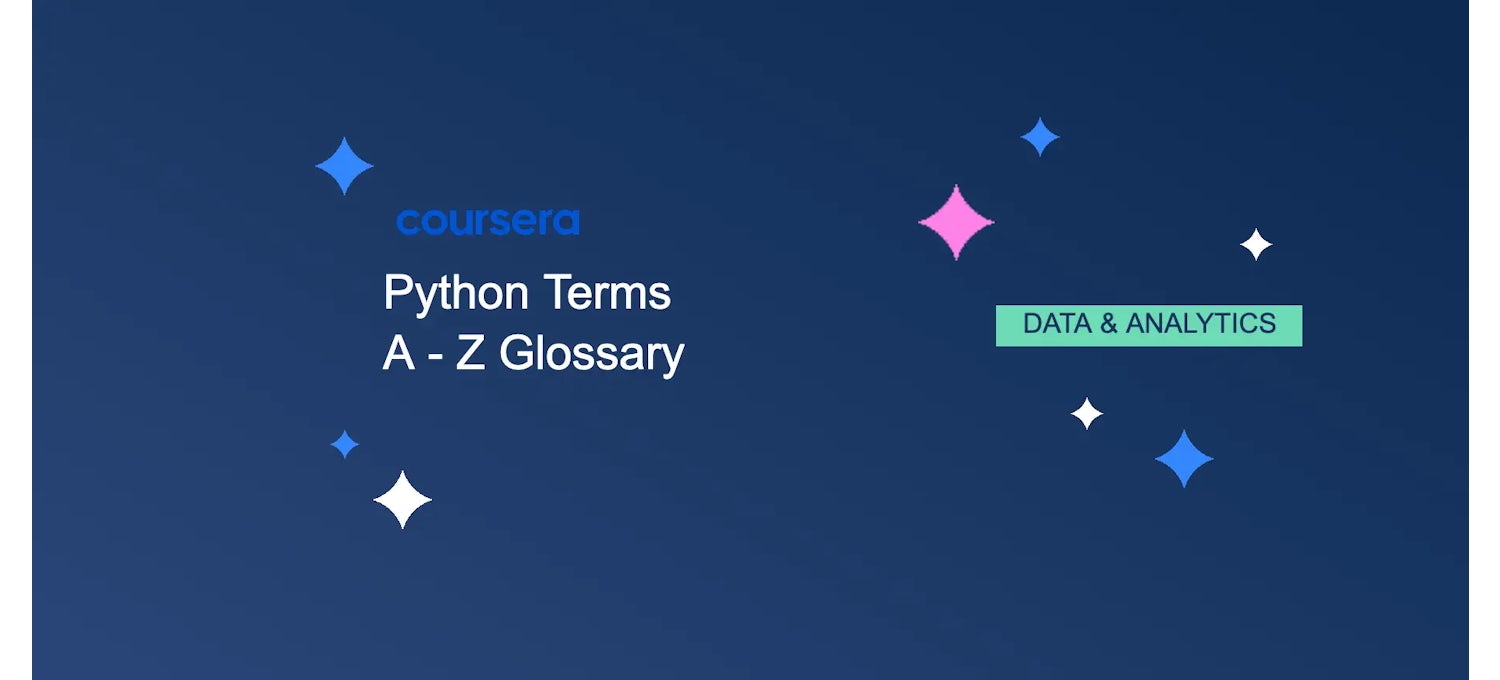Python Glossary: Essential Terms and Definitions
This Python glossary provides clear definitions of essential Python terms, jargon, and concepts to help developers at all levels improve their understanding.

Python is a high-level, interpreted programming language known for its clear syntax and readability, making it an excellent choice for beginners and experienced programmers. It is widely used for web development, data analysis, artificial intelligence, scientific computing, and more. Python's design philosophy emphasizes code readability, and its syntax allows programmers to express concepts in fewer lines of code than might be used in languages such as C++ or Java.
Why is Understanding Python Terminology Important?
This glossary will familiarize you with the Python terminology for coding, debugging, and further learning. Understanding these terms can help you navigate Python programming more effectively, whether you're preparing for a technical interview, starting a new project, or studying for a certification.
Python Terms
You’ll find common Python terms in the glossary below.
Argument
In Python, an argument is a value passed to a function or method when it is called. Arguments are specified after the function name inside the parentheses. They can be used in the function body as variables.
Class
A class in Python is a blueprint for creating objects. Classes encapsulate data for the object and functions that manipulate that data.
Clone
Cloning in terms of a repository means creating a local copy of a remote repo. This is often done to create a local workspace where changes can be made independently of the original repository.
Commit
In version control systems, a commit is a snapshot of your entire repository at one point. It provides a record of what changes were made and who made them. Each commit includes a commit message that describes the changes.
Decorator
A decorator in Python is a design pattern that allows a user to add new functionality to an existing object without modifying its structure. Decorators are usually called before the definition of a function you want to decorate.
Dictionary
A dictionary is a mutable, unordered collection of key-value pairs. Keys must be unique and immutable. Dictionaries allow for fast data lookup and are implemented using hash tables.
Exception
An exception is an event that occurs during a program's execution and disrupts the normal flow of its instructions. In Python, exceptions are triggered automatically on errors or can be triggered and intercepted by your code.
Function
A function in Python is a block of organized, reusable code used to perform a single, related action. Functions provide better modularity for your application and a high degree of code reuse.
Generator
A generator in Python is a particular type of iterator that allows the user to return a value and resume processing to return subsequent values. Generators are written like regular functions but use the yield statement when they want to return data.
Import
In Python, import is a keyword to import modules into the current namespace. Modules are Python .py files that consist of Python code.
Iterable
An iterable in Python is any object capable of returning its members one at a time, permitting it to be iterated over in a loop. Common examples of iterables include lists, tuples, and dictionaries.
Lambda
A lambda function is a small anonymous function defined with the lambda keyword. Lambda functions can have any number of arguments but only one expression.
List
A list in Python is a mutable, ordered sequence of elements contained within square brackets. Lists are versatile and can be used to store a sequence of objects.
Loop
A control structure in Python that repeatedly executes a block of code as long as a given condition is true. Common types include loops, which iterate over a sequence, and loops, which continue based on a conditional test.
Merge
Merging is a version control operation that integrates changes from one repository branch into another. This can happen within a personal project or as a collaborative effort where changes from multiple contributors are combined.
Module
A module is a file containing Python definitions and statements. The file name is the module name with the suffix .py added.
Object
In Python, an object is an instance of a class. Objects have the data attributes and methods that were defined in the class.
Package
A package is a namespace that contains multiple packages and modules. It is simply a directory with a Python file named __init__.py.
Parameter
Parameters are variables that are defined in the function definition. They are used to receive and store arguments passed to a function at the call time.
Pull
A pull is a version control operation in which changes from a remote repository are downloaded and integrated into a local copy of a project. This is often used to synchronize a local repository with changes made by others.
Push
A push is a version control operation to upload local repository changes to a remote repository. This operation allows other users to see the changes made when they pull from the repository.
Repository (Repo)
A repository is a central file storage location used by version control systems to store multiple versions of files. In web development and software projects, a repository often refers to a storage location on services like GitHub or GitLab where code is stored, tracked, and managed.
Tuple
A tuple is an ordered and immutable collection written with round brackets. It can contain a mix of objects.
Variable
A variable in Python is a reserved memory location for storing values. In other words, a variable in a Python program gives data to the computer for processing.
Version
In software development, a version refers to a specific state of a software package or is saved in a version control system. Versions allow development involving multiple contributor versions if necessary.
Virtual Environment
A virtual environment is a self-contained directory tree that contains a Python installation for a particular version of Python, plus several additional packages.
Ready to Elevate Your Python Skills?
Enhance your programming skills with Python courses. Whether you're a beginner or looking to deepen your knowledge, these courses offer practical experience and essential insights. Explore Python courses today and take the first step toward mastering this versatile language.
When you're ready, consider the Python For Everybody Specialization. You can learn to program and analyze data with Python and develop programs to gather, clean, analyze, and visualize data.
FAQs about Python Terminology
In Python, dict is a special attribute that stores an object’s namespace as a dictionary. It holds all the attributes (variables and methods) of an object, allowing developers to inspect or modify them dynamically. This attribute is commonly used for debugging, reflection, and metaprogramming.
Python has a set of reserved keywords, which are special words that have predefined meanings and cannot be used as variable names, function names, or identifiers. As of Python 3.10, there are 35 keywords, but earlier versions contained 33 reserved words. Python keywords are case-sensitive and must be used according to their specific purpose in the language.

Coursera
Writer
Coursera is the global online learning platform that offers anyone, anywhere access to online course...
This content has been made available for informational purposes only. Learners are advised to conduct additional research to ensure that courses and other credentials pursued meet their personal, professional, and financial goals.
